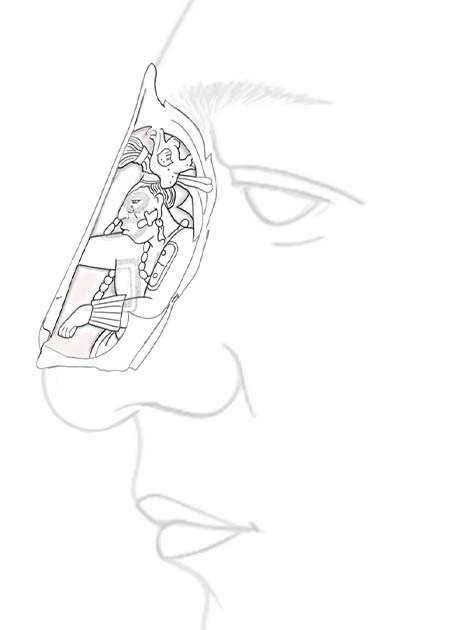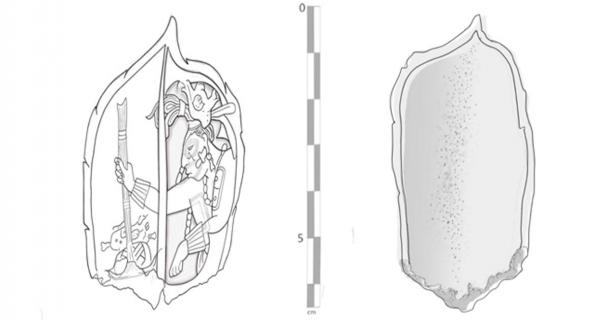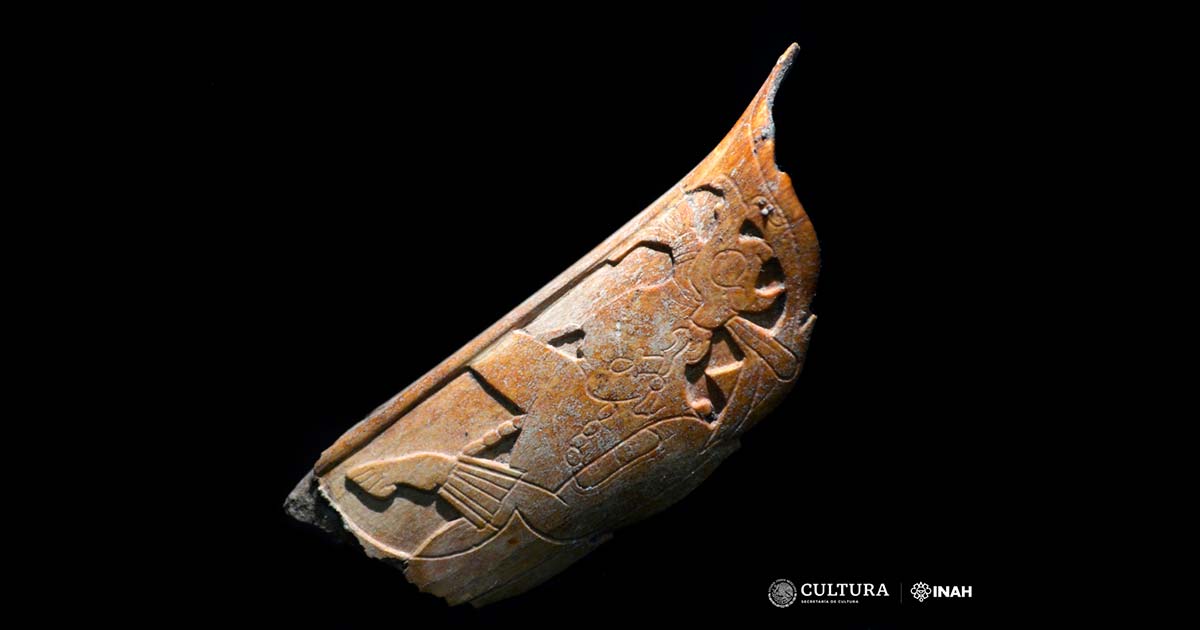Mayan Nose Ornament Made from Human Bone Found in Palenque Ruins
In a groundbreaking discovery at the Palenque Archaeological Zone in Chiapas, Mexico, a Maya nose ornament was uncovered, showcasing an intricately carved scene. This adornment, crafted from human bone, was once worn by the leaders and religious figures of this ancient city during rituals where they embodied K'awiil, the Mayan deity of corn and fertility.
The National Institute of Anthropology and History (INAH) announced in a press release that the remarkable artifact belonged to a ceremonial deposit from the Late Classic period (600-850 AD), marking the end of a construction phase at Palenque.
Palenque, An Outstanding Maya Site
The archaeological site of Palenque stands as one of the most remarkable remnants of the ancient Mayan civilization. Nestled amidst lush tropical rainforests, this UNESCO World Heritage Site boasts an array of beautifully preserved temples, palaces, and carved stone monuments that reflect the zenith of Mayan artistry and architecture. The ruins hint at the once-thriving city that peaked in power from the 6th to the 9th centuries AD.
Among its most renowned structures is the Temple of the Inscriptions, which houses the tomb of the notable ruler Pakal the Great. Beyond its architectural marvels, Palenque has provided archaeologists with invaluable insights into Mayan socio-political systems, religious practices, and daily life, making it a pivotal location for the study and appreciation of pre-Columbian Mesoamerican history.

The archaeological site of Palenque. Source: javarman / Adobe Stock.
The Discovery of the Nose Ornament
Arnoldo González Cruz, the lead of the Palenque Archaeological Project (PAP), explained that this ceremonial deposit was discovered during an expedition to verify the potential existence of a staircase within a substructure. Instead, a stucco floor was found underneath a wall. While cleaning the site, a hole 26 centimeters wide and 30 centimeters deep was observed. It was filled with clay and bits of charcoal. Excavating further, they found animal bones, obsidian blades, and fragments of a bone tool with faint inscriptions. This hole was capped with scorched earth pieces.
“The soil was notably dark with abundant charcoal. We also found seeds, fish bones, turtles, small mammal remains, and sizable charcoal fragments. Among these was the bone nasal ornament,” stated an INAH Chiapas Center researcher.
- Palenque – The Splendor of a Great Maya Metropolis
- Maya Elites Danced Wearing As Much As 25 Pounds of Jade Jewelry
Nose Jewelry Made From Human Bone
The ornament stands out due to its artistic quality; its detailed design was carved into a 6.4 by 5.2 cm space, with a thickness reducing from bottom to top. It was crafted using the front portion of a distal tibia to utilize a ridge on the bone. Once complete, this ridge mirrored the wearer's nose bridge and extended over their forehead, splitting the ornament's design.

The nose ornament was made with part of a human distal tibia and has a scene engraved that expresses communication with the gods and ancestors. Photo: Carlos Varela Scherrer / INAH.
The ornament features the side profile of a man with various accessories, including a bird-headed headdress. One arm displays the Mayan glyph for "night" or "darkness". He holds a slender item, intricately decorated, that extends across the ornament. A lower jawless human skull rests on what looks like a cloth bundle with crossed bands.
The bone's crest symbolizes a gateway that the figure seems to be passing through, connecting with the deities and ancestors—a recurring theme in Classic period Mayan art (250-900 AD).

The nose ornament depicts a man with various accessories, including a bird-headed headdress and a human skull. Photo: Carlos Varela Scherrer / INAH.
The PAP coordinator said that this nasal ornament was a symbol of the city's elite, as seen in several sculptures, like the sarcophagus of the Temple of the Inscriptions and the Oval Tablet of House E. Prominent figures such as Ajaw Yohl Ik'nal and Pakal I were depicted with it.
"We theorize it symbolized the corn deity due to the distinct elongated head and pointed profile, mimicking a growing ear of corn. The Palenque inhabitants aimed to emulate this god's appearance through deliberate skull reshaping. The nasal ornament's design ensured a continuous profile from the nose tip to the forehead," he detailed.
Mayan nose jewelry, like many adornments from the ancient Mesoamerican cultures, held deep cultural and spiritual significance. Often crafted from precious metals, jade, bone, and other valuable materials, these nasal ornaments were typically reserved for the elite, underscoring their stature, religious roles, or political power within society. Intricately designed, they often depicted or invoked the presence of deities. Moreover, such jewelry played a vital role in rituals and ceremonies, symbolizing the wearer's deep connection to the divine and the cosmos.
While further analysis is required to determine its crafting process, Gonzalez Cruz concluded, “This ornament showcases the Mayans' artistic flair. Its symbolic significance offers insights into the beliefs of the ancient Palencanos about death and the human soul's existence beyond.”
Top image: The Mayan nose ornament which personified the Mayan god of corn. Photo Carlos Varela Scherrer / INAH.

















